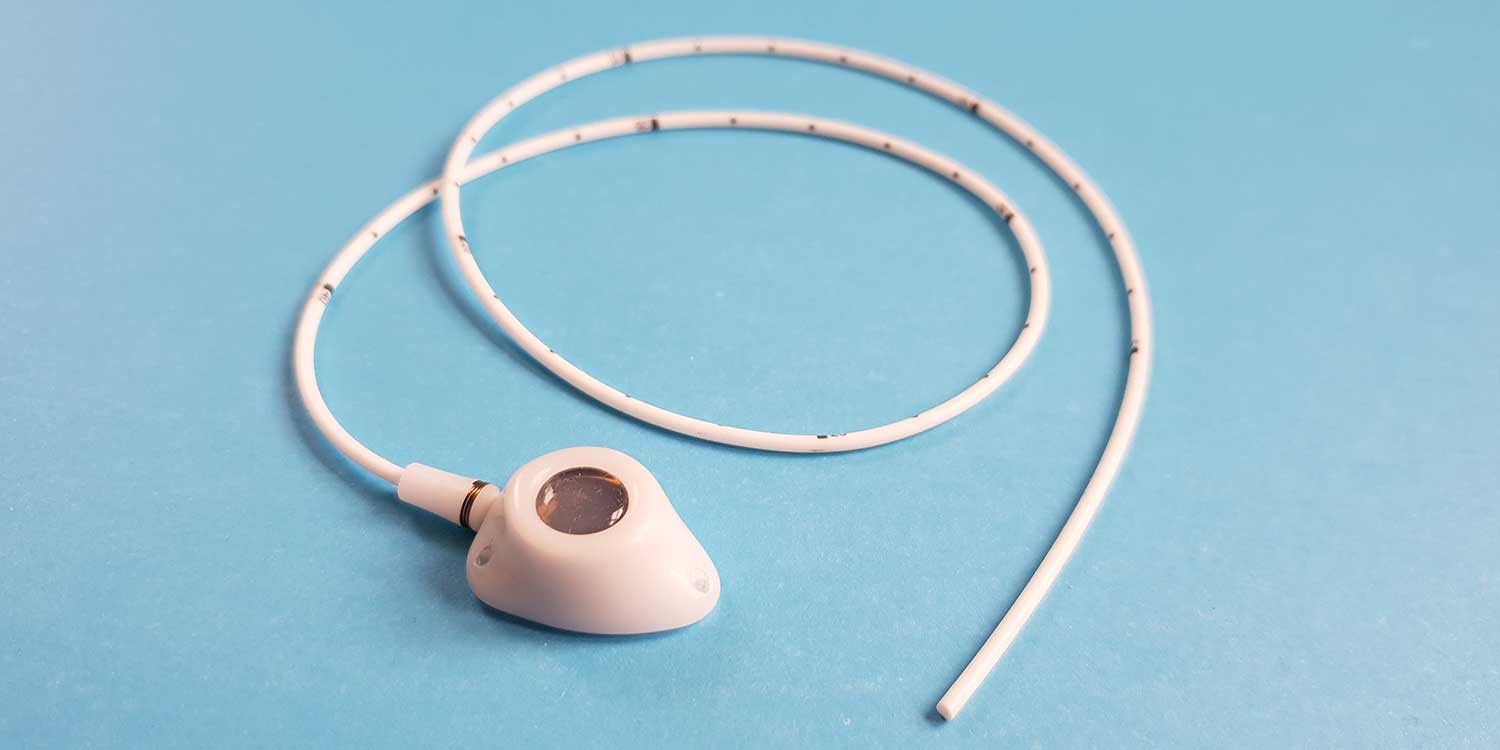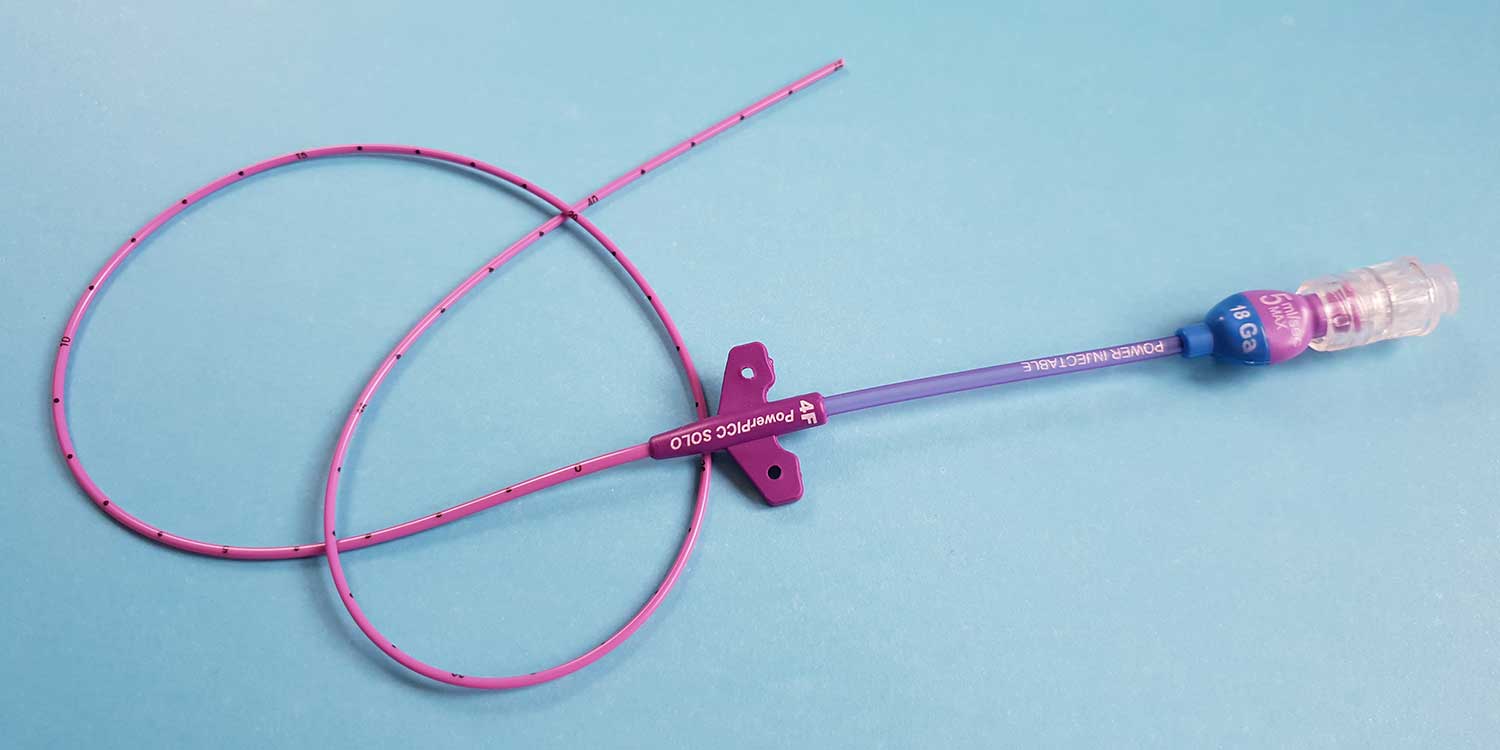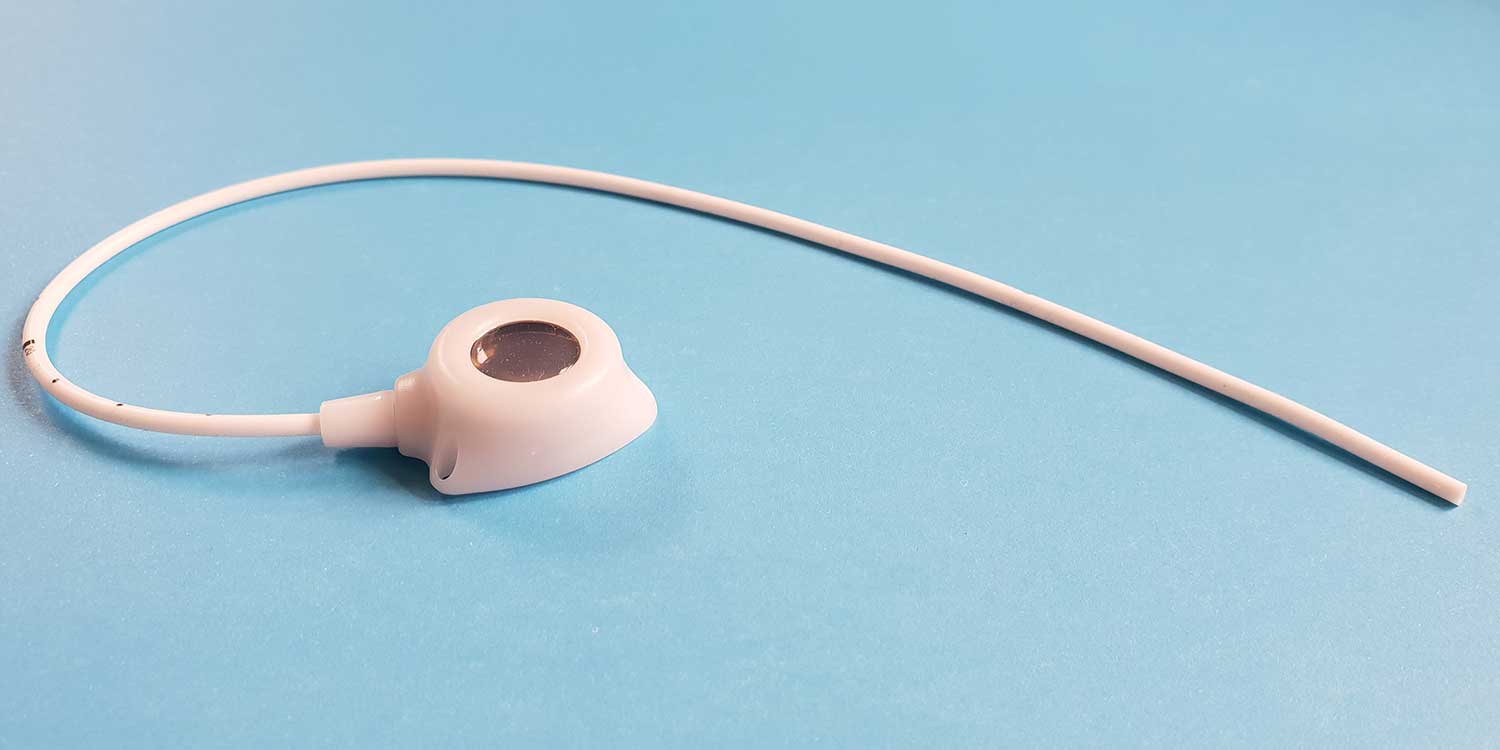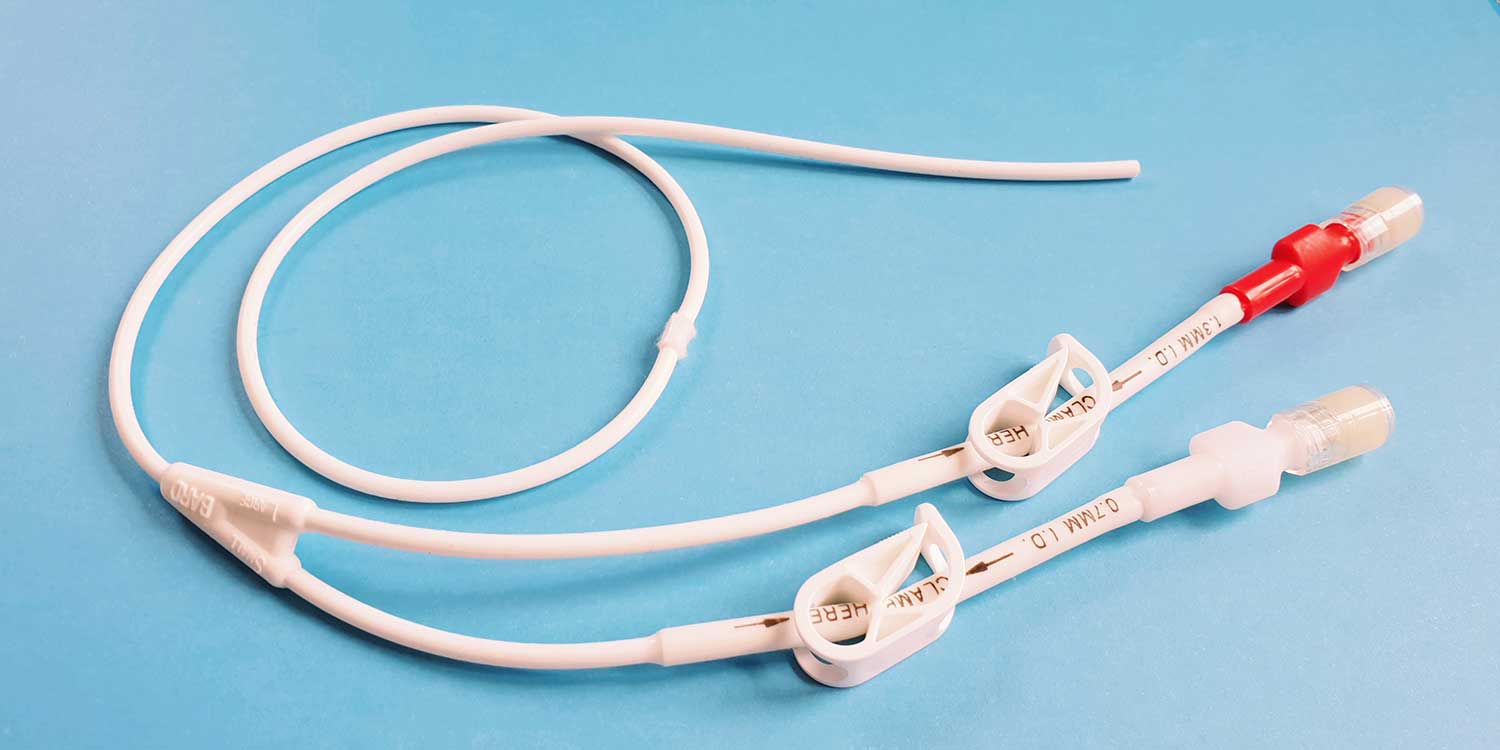Arm Port Insertion

An Arm Port is essentially a cross between a PICC and a Port. The catheter is inserted into a vein in the upper arm (like a PICC) but instead of having a length of catheter externally, an injection port (portal) is attached and then implanted under the skin on the upper arm.
They are used less commonly than Ports implanted in the chest because there are some limitations with how they can be used.
More about the Arm Port
It consists of a long thin flexible tube (catheter) which enters one of the veins in the upper arm so that one end of the catheter sits in the large vein just outside the heart and the other end is attached to an injection port which is implanted under the skin on the inner aspect of the upper arm. The main advantage the Arm Port has over a PICC is that it is completely covered by your skin so you don’t need to cover it when you shower. They are used less commonly than Ports implanted in the chest because there are some limitations with how they can be used (ie not recommended for infusional chemotherapy and the flow rates are too low to be used for contrast enhanced CT scans). Also, some patients’ veins may be unsuitable or lymph node surgery may preclude the insertion of an Arm Port.
How is the Arm Port used?
The skin over the Port is sterilized and the port is accessed by puncturing the overlying skin with a special needle (Huber needle). If necessary, anaesthetic cream can be applied to the skin beforehand to make this more comfortable. The Huber needle is designed so that it will not damage the silicone septum. Blood is drawn back to check that the port is functioning normally and then it is flushed with saline before treatment can begin. After each use, the Port is flushed with saline followed by dilute heparin to prevent any clots from forming. The needle is then removed from the port just leaving a pinprick mark on the skin.
How is the Arm port inserted?
The procedure is performed under local anaesthetic and intravenous sedation in either the Interventional Radiology suite at KIMS Hospital or the operating theatre at the Nuffield Hospital. Dr Leech will examine the veins using an ultrasound machine to check their position and suitability and then insert a flexible wire into the vein. X-rays are used to check the final position of the port ensuring that the tip of the catheter lies in the large vein just outside the heart.
The actual procedure takes approximately 30-40 minutes. A tiny incision (1-2mm) is made close to the armpit and a larger 2cm incision is made in the inner part of the upper arm close to the biceps muscle.
Absorbable sutures are used to close the wounds so there are no stitches to remove afterwards. These wounds are covered with a water resistant ‘skin glue’ so there are no dressings to change. Typically, most patients go home 60-90 minutes after the procedure. You should arrange for someone to take you home, as you must not drive for 24 hours following sedation.
What preparation is required?
All patients need to have MRSA and COVID 19 swabs taken at least 48 hours prior to the procedure. If you are a Haematology patient or have already started chemotherapy you will also need to have some blood tests. If you are taking anticoagulant drugs (blood thinning medication such as Warfarin, Fragmin, Rivaroxaban), these will need to be stopped. Dr Leech will advise you when to stop your medication depending on the drug and the indication.
On the day of insertion, you may eat a light breakfast/snack before 9am if your procedure is in the afternoon but have nothing to eat after midnight if it is in the morning. You may drink water right up until the time of the procedure. You will need someone with you to drive you home afterwards because the procedure is performed under sedation and you must not drive/operate machinery for 24 hours.
Aftercare
For two weeks, avoid strenuous activities of the upper limb (no golf, contact sports or swimming for 4 weeks) and be careful showering. The skin glue is water resistant but should not be washed vigorously with soap. The wounds should be dried carefully after showering (do not rub them). It is inadvisable to soak in a bath until the wounds have fully healed (approximately 2 weeks). If there are any issues associated with wound healing, persistent redness or soreness please contact your Oncologist, Chemotherapy nurse or Dr Leech’s secretary.
It is quite usual for your upper arm to ache for a few days after the procedure. Simple pain killers such as paracetamol will help relieve this or you can take any other pain-relieving medication prescribed for you.
The Port needs to be flushed with saline once per month to keep it working (if your chemotherapy is more frequent than this it will be flushed at the same time). When the Port is no longer required, it can be removed. This is normally done under local anaesthetic but is a more minor procedure than the insertion (sedation can be given if required).
Complications
With modern imaging techniques (using both ultrasound and X-rays), the risk of the procedure itself is minimal. However, there is still a very small risk of blood vessel injury, nerve damage, and wound infection. There is also the very remote chance of being allergic to the local anaesthetic or the skin glue that is used.
Bruising is relatively common especially in patients taking anticoagulant therapy but is normally confined to a small area and resolves within a couple of weeks. Thrombosis is a risk for all patients on chemotherapy and having a Port may increase this risk very slightly. If you do experience any sudden onset of pain and swelling in your arm, neck or face, you should contact your Oncologist, Chemotherapy nurse or Dr Leech’s secretary.
Rarely the catheter can move within the body and become malpositioned. This is known as migration and occurs more common with PICCs and tunnelled CVCs rather than ports. If a chest X-ray confirms that this has happened, it may be necessary to re-position the catheter.



